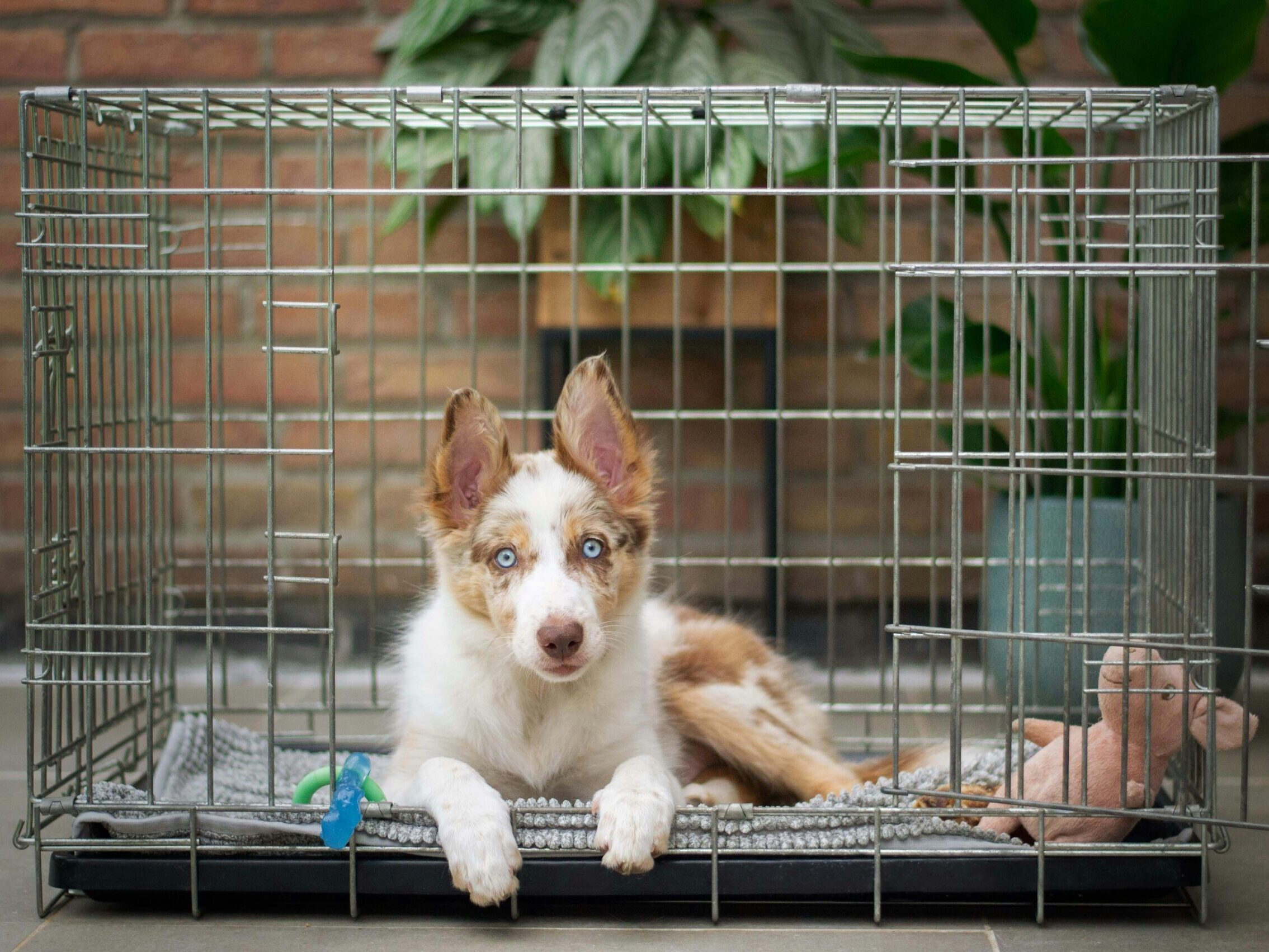
Crate Training
Ever notice when your dog lays down under a table or curls up in a corner or under your legs when you prop your feet up to relax? That is the natural denning instinct in action. In the wild, dogs used sheltered and secured places to raise their litters. Dens provided protection from aggressors and were essential for pack survival. A kennel crate, a den-like setting, has the same calming effect on domestic dogs today.
A kennel crate can become a quiet secure place of relaxation and sanctuary for your dog – his very own room. When traveling, a kennel crate serves as a travel cabin so your dog can go with you by car or by plane. Crates are also very effective, humane housetraining tools, since dogs are clean and don’t want to sleep in a soiled place. And for dogs who chew on lots of things, it keeps them safe and protects them from ingesting dangerous materials.
Start Training.
Buy a crate that provides enough room for your dog to stand up, turn around and lie down. For a puppy, be sure to consider his size when full grown.
Decorate her “den” with soft bedding and some favorite toys for playing and chewing will help to make it fun. When dogs have been introduced to their crate while still very young, they grow to consider their crate their special “hang-out” or even their “Chateau”. A towel draped over the crate can make it a cozy den-like hideout. Give your dog water and a treat as soon as you place him inside. And NEVER use a crate for the purpose of punishment!
Introduce the dog to the crate gradually. Place a treat in the crate and let the dog enter and exit the crate on his own. Always reward positive behavior. You can also feed the dog in the crate when you are still at home as a method of introduction.
Begin confining the dog to the crate for a few minutes at a time when you are home and nearby. Wait until she has settled down and is not whining to let her out. Watch for signs of fear and distress such as barking, howling, excessive pawing at the door. If the dog is fearful in the crate, let her out, calm her down and try confining her for shorter periods, until she is comfortable. Then lengthen the time until you can leave her for an hour or two.
When using the crate in conjunction with housetraining, a puppy should only be in a crate a maximum of one hour per month of age. Most puppies at four months can stay overnight for five to six hours before they need to be taken outside for a potty break. A one-year-old adult dog should not be in a crate more than eight hours.
Taking the time to work with your dog to make the crate his special, safe “den” will give you the peace of mind of knowing your dog is comfortable and safe staying alone. It will also give you the opportunity to comfortably include your furry family member at home gatherings and on family outings.
